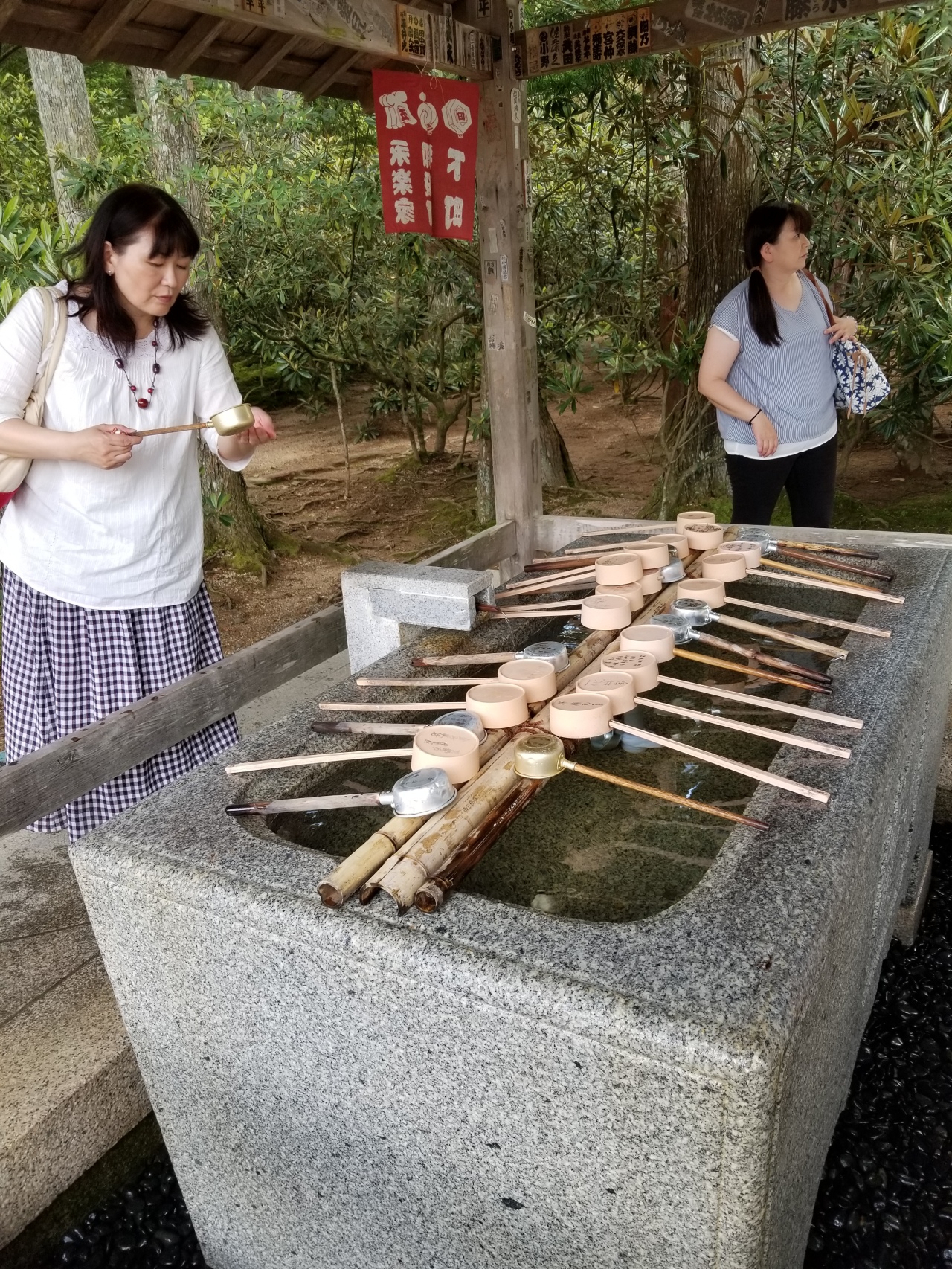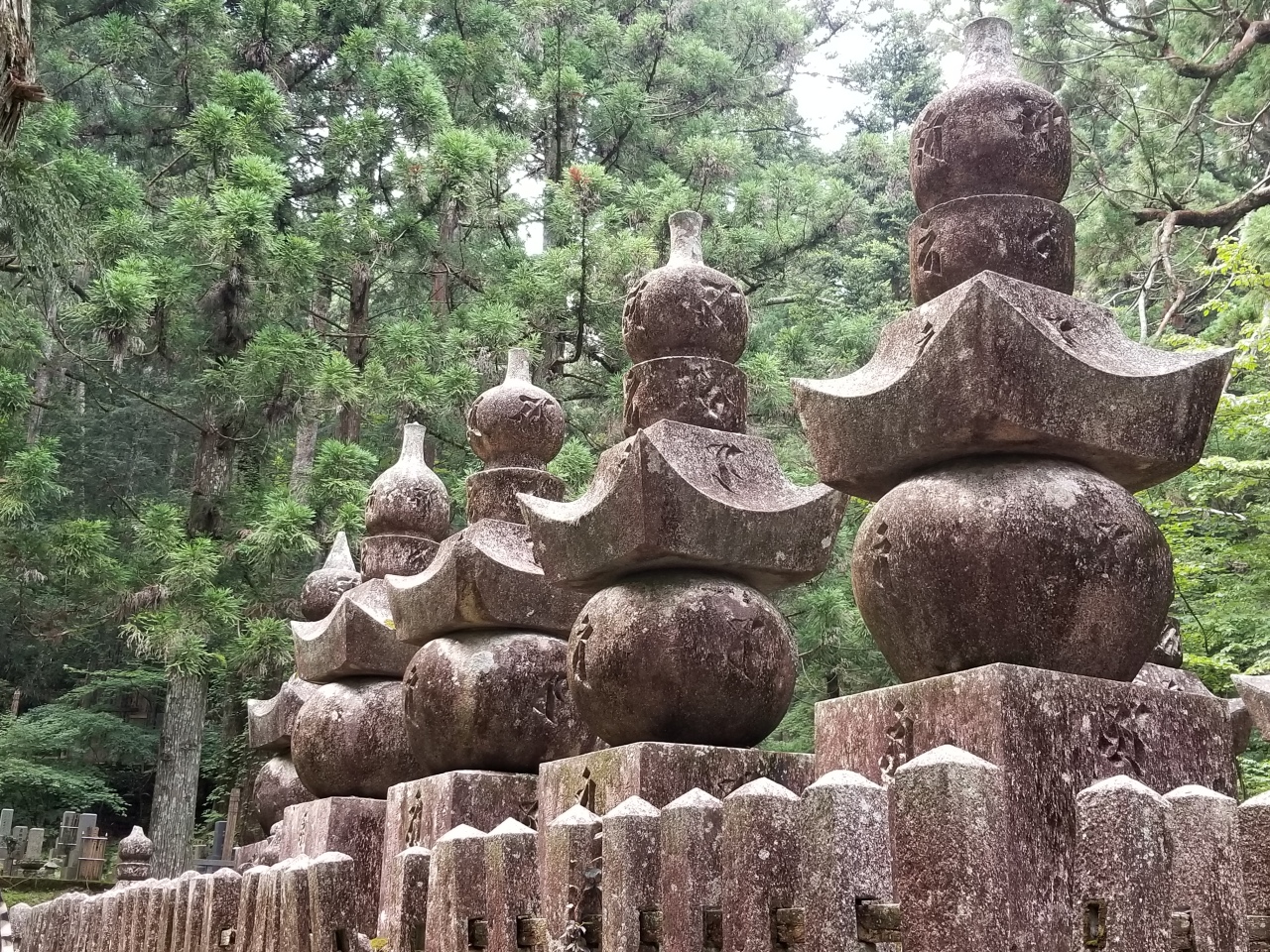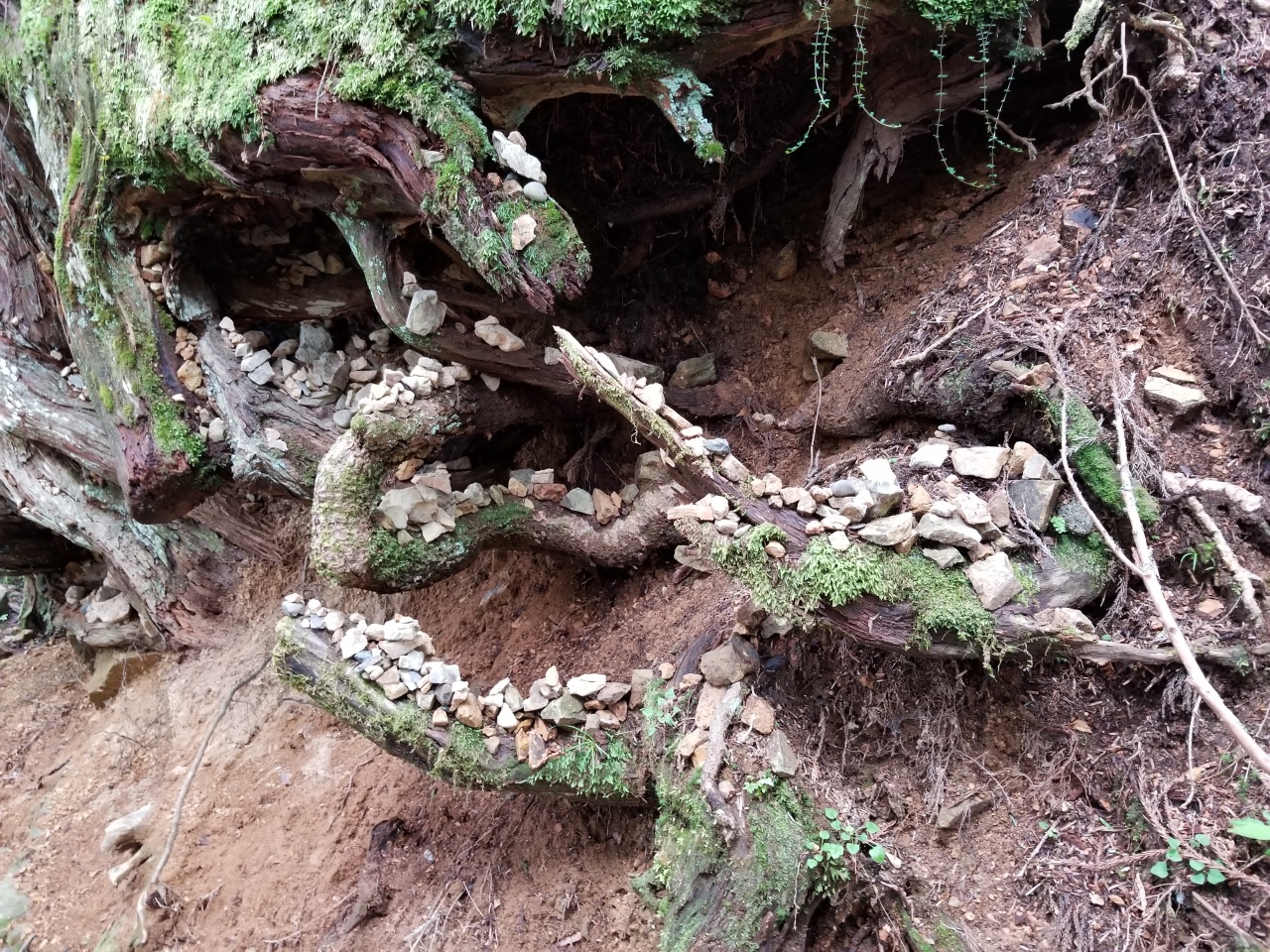In Canadian contexts, using the word “old” to describe a building or place usually means you’re referring to somewhere with a few hundred years of history, sometimes much less. But in Japan, “old” takes on a much weightier significance.
With my Wakayama University colleague Kazue at the wheel, we drove out of Wakayama City and climbed into the green highlands to visit Koyasan, a UNESCO world heritage site that dates back to 800 AD. The Buddhist monk Kobo Daishi Kukai established a monastery in the mountains where he and his followers could shut themselves away from the world to pray for peace and people’s well-being. Today, Koyasan attracts visitors from around the world, some for a day visit, others as a part of a longer spiritual pilgrimage.
Koyasan is 15 km around with many interesting individual sights to tour. But we’re only there for a few hours, so we confined our visit to two areas- the Dano Garan complex where Buddhist monks train, and Okunoin, a sacred area that contains more than 200000 gravestones, memorial pagoda, and the mausoleum of Kobo Daishi himself. He is believed not to have died but to have entered a state of eternal meditation to pray for the freedom of all living beings.
Before we entered the monks’ training area, we stopped at a purification well. Kazue showed me how to pour a dipper of water first over my left hand, then my right. Then I poured enough water into my cupped left hand to sip from and spit out before pouring the remainder of the water in the dipper back over its handle and replacing it for the next person to use.
 As soon as we entered the grounds of the monk’s training area, I sensed its peacefulness. Kazue pointed out that there is no artificial ornamentation on the buildings, a decision made to keep them in close relationship with their natural surroundings.
As soon as we entered the grounds of the monk’s training area, I sensed its peacefulness. Kazue pointed out that there is no artificial ornamentation on the buildings, a decision made to keep them in close relationship with their natural surroundings.
After wandering around a bit, we headed out to the main road, and browsed the quietly commercial sector of Koyasan, where shops and restaurants serve visitors’ more worldly needs. But even here, an aesthetic grace matches the serenity of the spiritual areas.


 Along the same street, we saw the entries to various shukubo, temples that provide guest lodgings. Originally intended for itinerant monks, they now provide rooms to travellers seeking an authentic Koyasan experience.
Along the same street, we saw the entries to various shukubo, temples that provide guest lodgings. Originally intended for itinerant monks, they now provide rooms to travellers seeking an authentic Koyasan experience.
 At the entrance to Okunoin, the sacred burial ground, we paused once again to purify. The first monument is dedicated to the “student pilots,” the World War II kamikaze.
At the entrance to Okunoin, the sacred burial ground, we paused once again to purify. The first monument is dedicated to the “student pilots,” the World War II kamikaze.

 After reflecting on this modern memorial, we stepped into the leafy coolness of a towering cedar forest. This is the final resting place of monks, feudal lords, shogun, writers and other Japanese historical figures; present day emperors of trade such as the founder of Panasonic; as well as common people, loved and remembered by their families.
After reflecting on this modern memorial, we stepped into the leafy coolness of a towering cedar forest. This is the final resting place of monks, feudal lords, shogun, writers and other Japanese historical figures; present day emperors of trade such as the founder of Panasonic; as well as common people, loved and remembered by their families.
Along the pathway, there are some sights which, to my Western eye, appeared unusual. The first are the five-tiered stupa, memorial stones whose shapes and the Sanskrit letters carved on them represent the five elements taught in Buddhism- earth, water, fire, wind, and space. These are the components of the physical world and our own bodies that are not destroyed in death.
The second sight which seemed a bit unusual, even quirky, were some Buddhist statues wearing bibs. The bibs had been placed there by families who were praying for the protection of their lost children or for the long life of those who remain.

At last, we arrived at the entrance of Kobo Daishi’s mausoleum. No photographs were allowed in this area. Inside the mausoleum, candles flickered and the chanting of a solitary monk echoed in the darkness.
On the way back to the car, there were still more sights to see. Some Kazue could explain to me: the stones lined up at the base of a tree are placed there for good luck. But the tiny figure in a natural alcove remained a mystery to us both.
Maybe that’s the best reason to travel to a culturally complex destination. We make some fascinating discoveries, which include realizing that some things about the culture have such ancient roots that they will remain forever outside of our understanding.












I love travel, experiencing a new culture, meeting people, seeing history, but at times travel can be stressful for some. I loved your piece and this place. A calmness comes over me as I view your pictures and read, feeling like I am there with you. Pam, are you using a camera to take your photos, or a phone? They are amazing
Brenda
LikeLike
Thanks so much, Brenda. I know we share a love of travel, and that you understand it can have ups and downs, just like life at home does. Re the pictures- until this trip, I’ve used a camera. But I got a brand new Android Galaxy 8 before this trip which I’ve used for photography and blogging. I’m thrilled with the results of both.
LikeLike
great photos!!
LikeLike
Thanks, Tracy! The whole experience was awe-inspiring. Will you post some of Belgium?
LikeLike
Yes, definitely!
LikeLike
Another engaging read. Thanks Pam – I enjoyed the view into this peaceful place.
LikeLike